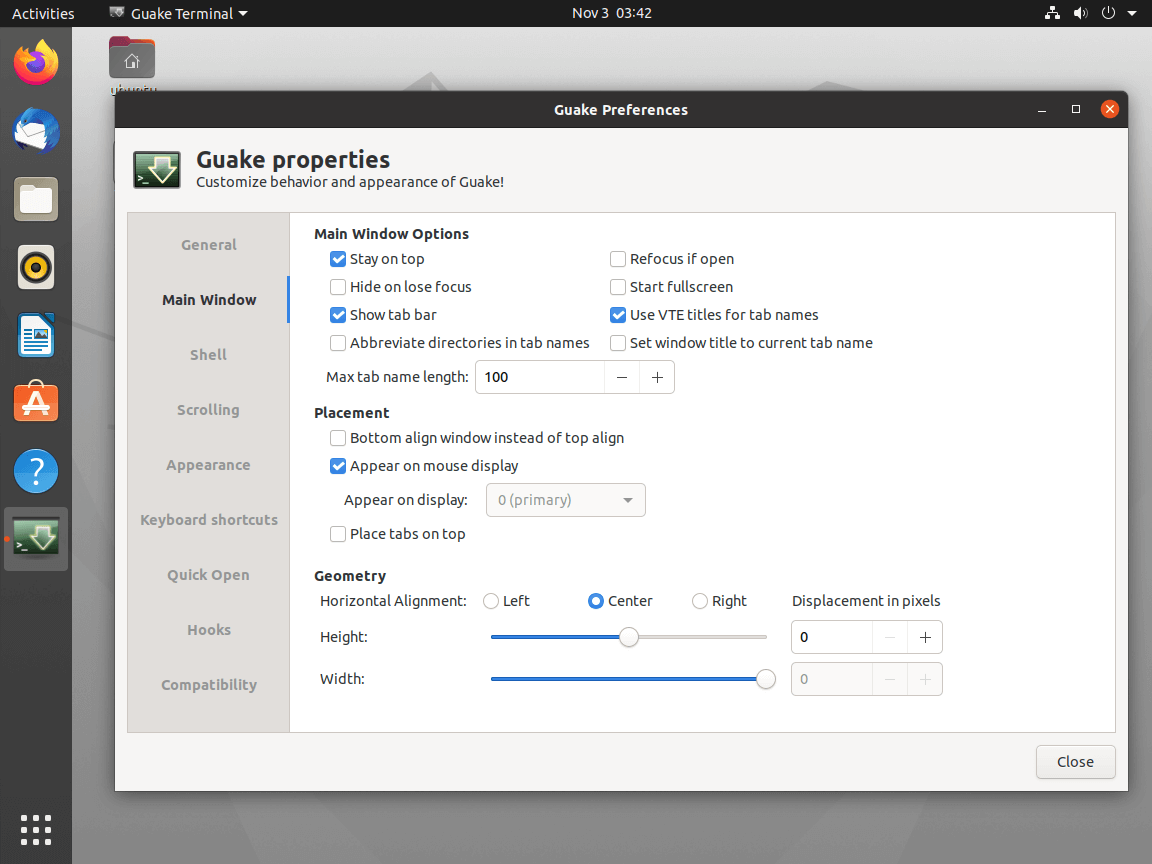
- #Linux terminal guake menu saved ssh session mac os#
- #Linux terminal guake menu saved ssh session install#
- #Linux terminal guake menu saved ssh session update#
This simply echoes each machine’s hostname to the command line, which can be handy if you’re constructing something host-specific across your cluster. The final menu option that’s nice to have is under the “Send” menu, called “Hostname”. This is handy if you want to exclude a host or two for a one-off or particular reason. By checking or unchecking the boxes next to each hostname, you can select which hosts the ClusterSSH console will echo commands to. Finally, you’ll see each host listed at the bottom of the “Hosts” menu. “Add host(s) or Cluster(s)” is great if you want to add another set of machines or another cluster to the running ClusterSSH session. “Retile Windows” does just that if you’ve manually resized or moved something. As per the figure below, in the “Hosts” menu of the ClusterSSH console there’s are several options that come in handy. ClusterSSH has a few menu items that really help when dealing with a mix of machines. If I want to send something to one of the terminals, I can simply switch focus by clicking in the desired XTerm, and just type in that window like I usually would. In a pinch, you can also login to machines that aren’t in your.

Anything I type into that small window gets echoed to all the machines in the cluster - in this case, machines “test1” and “test2”. The small window labeled “CSSH ” is the Cluster SSH console window. In the figure below, you can see I’ve logged into “cluster1” as myself. Simply running cssh -l will launch ClusterSSH and log you in as the desired user on that cluster.

Using ClusterSSH is similar to launching SSH by itself. This will save you time and headache if your.

#Linux terminal guake menu saved ssh session update#
However, my preferred method is to use a meta-cluster that encompasses the other clusters:īy calling out the “all” cluster as containing cluster1 and cluster2, if either of those clusters ever change, the change is automatically captured so you don’t have to update the “all” definition. First, you could simply create a cluster that held all the machines, like the following: If you wanted to make a cluster called “all” that encompassed all the machines, you could define it two ways. You can also make meta-clusters - clusters that refer to clusters. The ~.csshrc (or /etc/clusters) control file would look like this: “Cluster1” has the machines “Test1” and “Test2” in it, and “Cluster2” has the machines “Test3” and “Test4” in it. With that in mind, you enumerate your clusters at the top of the file in a “clusters” block, and then you describe each cluster in a separate section below.įor example, let’s say I’ve got two clusters, each consisting of two machines.

ClusterSSH defines a “cluster” as a group of machines that you’d like to control via one interface. Configuration is straightforward in either case, as the file format is the same. I tend to favor the user-level configuration as that lets multiple people on the same system to setup their ClusterSSH client as they choose. Of course, it can also be compiled from source.ĬlusterSSH can be configured either via its global configuration file - /etc/clusters, or via a file in the user’s home directory called.
#Linux terminal guake menu saved ssh session mac os#
There’s also a MacPorts version for use with Mac OS X, if you use an Apple machine. It is also packaged for use with Fedora, and it is installable via the ports system on FreeBSD.
#Linux terminal guake menu saved ssh session install#
Installing ClusterSSH on a Debian or Ubuntu system is trivial - a simple sudo apt-get install clusterssh will install it and its dependencies. It requires the Perl libraries Tk ( perl-tk on Debian or Ubuntu) and X11::Protocol ( libx11-protocol-perl on Debian or Ubuntu), in addition to xterm and OpenSSH. As such, it’ll run on just about any POSIX-compliant OS where the libraries exist - I’ve run it on Linux, Solaris, and Mac OS X. If you have a need to type the same command into several machines at once, you can login to each one with SSH and do it serially, or you can save yourself a lot of time and effort and use a tool like ClusterSSH.ĬlusterSSH is a Tk/Perl wrapper around standard Linux tools like XTerm and SSH. You may even have a bank of machines that you maintain that are similar - a farm of Web servers, for example. If you’re a Linux system administrator, chances are you’ve got more than one machine that you’re responsible for on a daily basis.


 0 kommentar(er)
0 kommentar(er)
